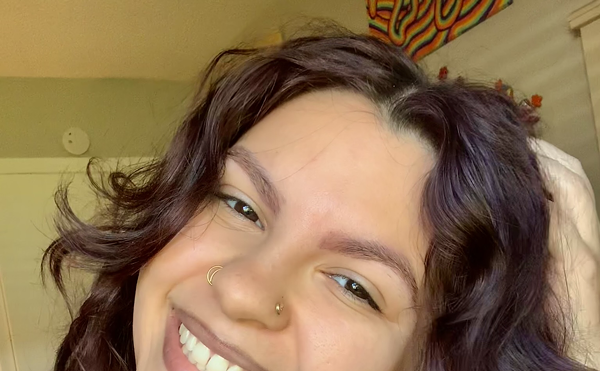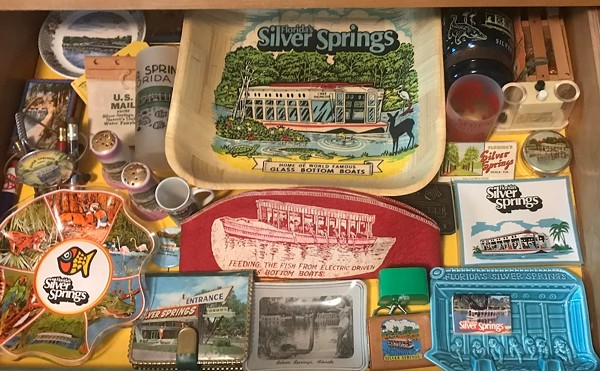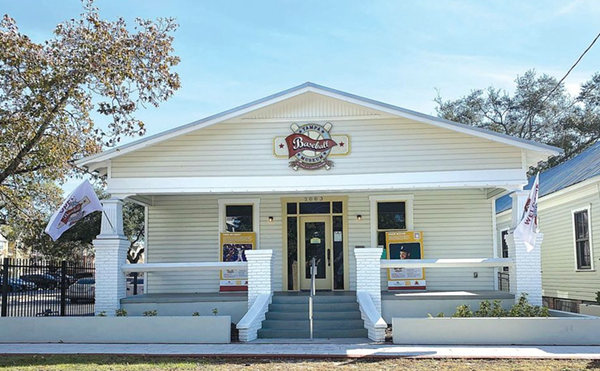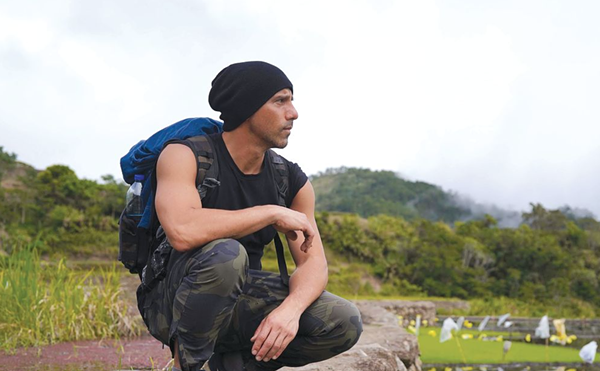When 20-something Hungarian artist Gyula Halász moved to Paris in 1924, he settled quickly into the bohemian lifestyle of the avant-garde. Fresh from art school in Berlin, where his attendance in classes had been spotty, and Budapest before that, Halász took up writing articles for German and Hungarian-language magazines to pay his rent (though barely) in Paris boarding houses. But his primary pursuit was having a good time, in Parisian cafes and nightclubs and even on the French Riviera, sometimes at the invitation of a wealthy patroness who could pick up the tab for the quirkily handsome artist.
Halász might have been on his way to becoming a permanent ne’er-do-well — he dreaded the prospect of his parents withdrawing their financial support — but for the intervention of another Hungarian, photographer André Kertész. Kertész’s reputation was blooming in Paris, where his carefully composed street photographs (documents of everyday life that were also artful studies of light and shadow) were being celebrated in exhibitions. Both Halász and his parents were persuaded by Kertész’s example, and their direct friendship with him, that photography would be a decent occupation for Gyula.
Under the pseudonym Brassaï (it literally means, “of Brassó,” the town of his birth), Halász went on to become one of the best-known names in 20th century photography. The key to his success, however, wasn’t abandoning his passion for Paris’s nightlife but making it the subject of his photographs. While Kertész crafted images for the bourgeois perspective of parks, street corners and objects in the light of day, Brassaï focused on counterculture after dark — late-night café scenes and dance halls, brothels, prostitutes and petty thieves. By the 1930s, his photographs were being published in Parisian magazines and compiled into books including one titled Paris By Night. (And the 1940s would bring even greater fame, along with a solo exhibition at the Museum of Modern Art in New York.)
A star was born.
Through Aug. 19, the Florida Museum of Photographic Arts presents 34 of Brassaï’s photographs — lusty, lonely, vaguely sordid — from the first decade of his success as a photographer, the 1930s. Many are now-iconic images that you’ve probably seen somewhere before, like Brassaï’s portrait of “Madame Bijou,” a matronly woman in a fur-collared coat whose neck, wrists and plump fingers are laden with pearls and gem-encrusted jewelry. (She sits alone at the café table where she reads customers’ palms, having lost her fortune, according to a bartender Brassaï rubbed elbows with while taking the shot.) Seeing such a familiar image in person provides a thrill. Others are less expected and experimental to varying degrees, confirming that Brassaï’s talents pushed at the boundaries of photography.
Still, much of his achievement lies in having mastered the essence of that medium: impeccable timing and rapport with subjects. Brassaï’s photographs of couples at cafés (four are included in the show) still manage to convey strikingly the complicated dance of love and lust: from excitement, bliss and slyness to disinterest, imbalance and dissolution. More obviously orchestrated, his pictures of goings-on at Suzy’s, a Montmartre brothel, and a hotel where client and prostitute freshen up before or after business, offer a different kind of voyeur’s delight. The Suzy’s photos range from the faintly comic “At Suzy’s, the presentation (1932),” a shot of a client and madame assessing three bare-bottomed women, to the ethereal “At Suzy’s, fille de joie in mirror,” a portrait of a prostitute adjusting her hair that projects modesty and a whiff of holiness onto its subject.
More than in these images, though, I find myself delighting in Brassaï’s truly impromptu photographs, like one taken at Le Balajo dance hall on rue de Lappe in 1936. Dozens of couples dance elbow-to-elbow inside the crowded space, where can-can posters in the style of Toulouse-Lautrec line the walls. As Brassaï snaps his shot, presumably with a hand-held camera and flash, a woman in the distance looks up and straight into the lens. Though not included in the FMoPA show, his photographs of partygoers at mixed-race dance halls and gay balls — worth seeking out in books — constitute some of his most interesting images and important contributions to cultural history.
Then there are Brassaï’s photographs of Paris itself at night. A series of shots from 1934 celebrate the city shrouded in fog and implied mystery. Across one image, beams of light from a car’s headlights slice through a darkened park; in another, a man wearing an overcoat slinks out from behind a kiosk. On the street and in the dark, Brassaï captures roving prostitutes and gangs of thieves as well as cesspool workers who arrive at a house before dawn for the malodorous endeavor of unclogging pipes.
Along with writers including Henry Miller — Brassaï published a memoir about their long friendship in 1975 that provides entertaining, if rambling, insight into Miller’s romantic discontents — Brassaï became close with visual artists including Picasso in Paris. The latter’s influence can be seen in a series of experimental photo works called “Transmutations.” To create them, Brassaï drew with a stylus onto glass-plate negatives of female nudes before printing the image, creating a high-contrast drawing atop the photograph. The results are fantastical primitivist-cubist figures that sometimes please and sometimes disappoint but leave no doubt that Brassaï — at once draftsman, photographer, writer and all-around fascinating person-of-the-world — was a man of many talents.


















